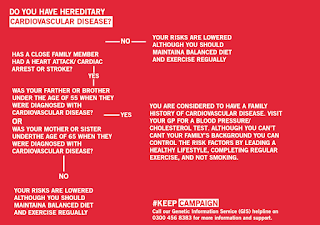When thinking about the ways in which young people will interact with the campaign, it was decided that an interactive mechanism should be put in place in order to promote to young people their chances of having hereditary heart disease. It was decided that this would be formatted in a quiz manner.
Research
Research was conducted into quiz style designs in which promote a yes or no effect.This was researched as this form of design is relevant for that of buzzfeed quizzes that are highly popular amongst young people. The mass text contained within the above quizzes forces them to appear daunting, and unappealing to a young consumer as they would have to read mass text. As the consumer only has a 4 second attention span, this also applies.
Quiz layouts were explored in order to promote a clean and concise layout. This being essential as previous research depicted designs in which were difficult to navigate. It was decided that the flush left approach would be used, as this design style has been mimicked within the other aspects of the campaign.
The hashtag was implemented onto the quiz in order to promote it as an important aspect of the campaign.
Type setting was explored in order to promote balance within the design. This being important as a young audience is aesthetically consumed.
The campaign slogan and title were altered in order to apply to the campaign design. The 'label' effect also promotes hierarchy within the design.
Hand rendered arrows were implemented into the deisgn although this did not comply to the digital aspects of the campaign and therefore was eliminated.
A yes or no approach was added in order to promote an easy to navigate design.
Final
The final design is easy to navigate as negative space is a key influence. The two tone colour scheme has been embeded in order to promote the brand aspects as well as the 'redify' aspect of their brand identity. The hashtag as well as a helpline was added to this design in order to promote further support for a consumer who may be upset by finding out that they have hereditary CHD. This is in order to insure that ethical implications have been covered, as the consumer is suppose to be aware of the possibilities of an illness not made to feel daunted or upset.
























No comments:
Post a Comment